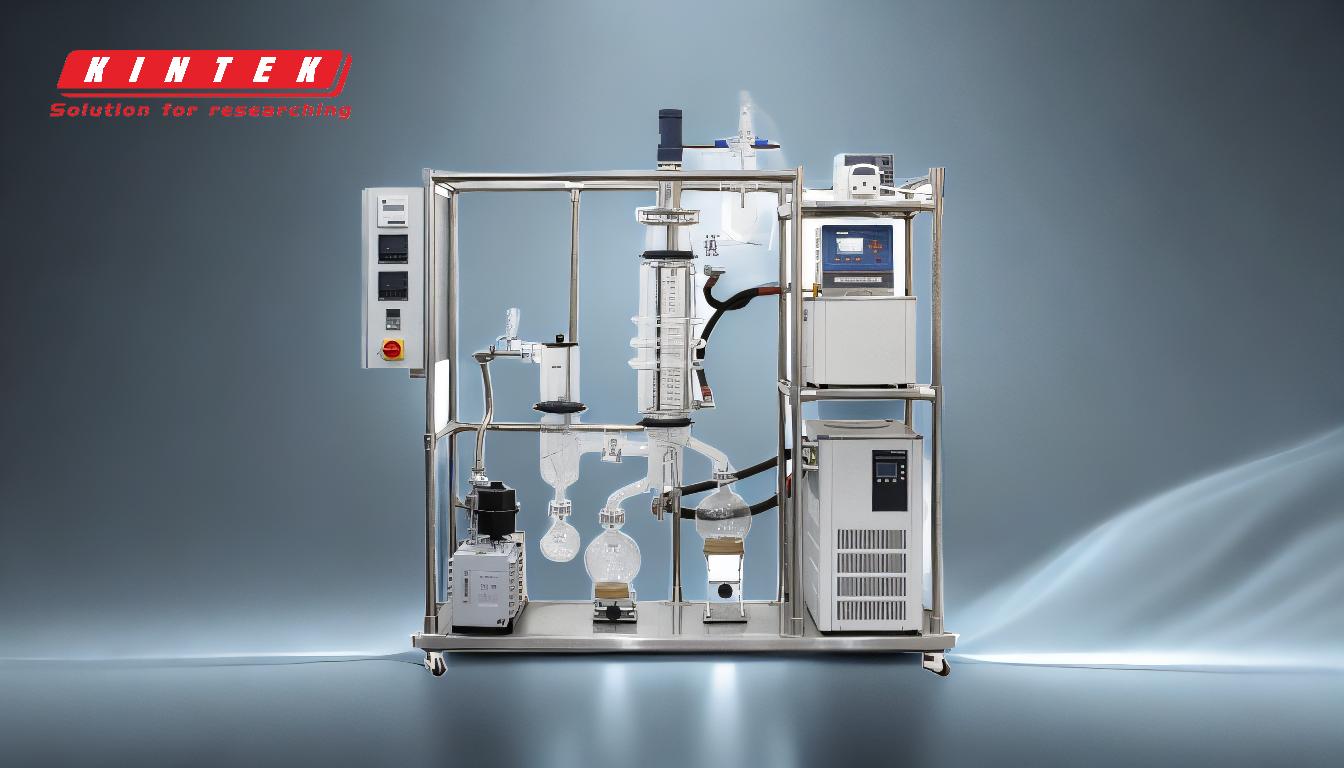Vacuum distillation, while a highly effective technique for separating compounds with high boiling points, carries significant risks if not performed with proper precautions. The primary dangers include implosions due to flawed glassware, explosions from concentrating unstable impurities, and thermal hazards from high-temperature fluids. Additionally, improper handling of equipment, inadequate cooling systems, and failure to monitor pressure and temperature can lead to accidents. Safety measures such as using heat-resistant materials, wrapping glassware with tape, and ensuring proper ventilation are essential to mitigate these risks.
Key Points Explained:

-
Implosions from Flawed Glassware:
- Cause: Glassware under vacuum pressure is susceptible to implosions if it has scratches, cracks, or other flaws. The vacuum creates a significant pressure difference, causing the glass to collapse inward violently.
-
Prevention:
- Inspect glassware for defects before use.
- Wrap glassware with tape to contain glass shards in case of an implosion.
- Use high-quality, vacuum-rated glassware designed to withstand pressure differences.
-
Explosions from Concentrating Unstable Impurities:
- Cause: Vacuum distillation can concentrate unstable compounds such as organic asides, acetylides, nitro-containing compounds, and molecules with strain energy. These compounds may decompose or react explosively under reduced pressure or elevated temperatures.
-
Prevention:
- Avoid distilling unstable or reactive compounds unless absolutely necessary.
- Use small-scale tests to assess the stability of compounds before full-scale distillation.
- Monitor the distillation process closely for signs of decomposition or unexpected reactions.
-
Thermal Hazards from High-Temperature Fluids:
- Cause: High-temperature fluids like Syltherm can cause severe burns and damage equipment if leaks occur. Silicone tubing, which is not heat-resistant, can degrade and fail under high temperatures.
-
Prevention:
- Use heat-resistant materials such as viton, PTFE, or PFA for tubing, hose barbs, and other components in contact with high-temperature fluids.
- Regularly inspect equipment for leaks or signs of wear.
- Handle high-temperature fluids with caution, using appropriate personal protective equipment (PPE).
-
Improper Handling of Equipment:
- Cause: Mishandling equipment, such as operating at high speeds without a load or exposing motors and speed regulators to moisture, can lead to mechanical failures or accidents.
-
Prevention:
- Follow manufacturer guidelines for equipment operation and maintenance.
- Avoid high-speed operation without a load to prevent motor damage.
- Keep speed regulators and motors dry to prevent electrical hazards.
-
Inadequate Cooling Systems:
- Cause: Insufficient cooling water or liquid nitrogen in the cold trap can lead to overheating, pressure buildup, or failure to condense vapors, increasing the risk of explosions or equipment damage.
-
Prevention:
- Ensure cooling water valves are open and functioning correctly.
- Regularly check and replenish cooling fluids (e.g., ethanol, water, or liquid nitrogen) in the chiller and cold trap.
- Monitor the cooling system throughout the distillation process.
-
Failure to Monitor Pressure and Temperature:
- Cause: Unmonitored pressure and temperature changes can lead to uncontrolled reactions, equipment failure, or hazardous conditions.
-
Prevention:
- Use pressure and temperature monitoring devices to track conditions in real-time.
- Set up alarms or automatic shutoff systems to respond to unsafe conditions.
- Maintain proper ventilation to prevent the buildup of hazardous vapors.
-
Reactions from Heating Unbalanced Mixtures:
- Cause: Heating mixtures that contain reactive or incompatible compounds can lead to violent reactions, especially under vacuum conditions.
-
Prevention:
- Avoid heating mixtures with known reactive components.
- Use inert atmospheres or stabilizing agents when necessary.
- Conduct small-scale tests to evaluate the stability of mixtures before full-scale distillation.
By understanding these dangers and implementing the appropriate safety measures, the risks associated with vacuum distillation can be significantly reduced, ensuring a safer and more effective process.
Summary Table:
| Risk | Cause | Prevention |
|---|---|---|
| Implosions from Flawed Glassware | Glassware under vacuum pressure collapses due to scratches or cracks. | Inspect glassware, wrap with tape, use vacuum-rated glassware. |
| Explosions from Unstable Impurities | Concentrating unstable compounds under vacuum leads to explosive reactions. | Avoid distilling unstable compounds, conduct small-scale tests, monitor closely. |
| Thermal Hazards | High-temperature fluids cause burns or equipment damage. | Use heat-resistant materials, inspect equipment, handle with PPE. |
| Improper Handling of Equipment | Mishandling leads to mechanical failures or accidents. | Follow guidelines, avoid high-speed operation without a load, keep equipment dry. |
| Inadequate Cooling Systems | Insufficient cooling leads to overheating or pressure buildup. | Ensure cooling systems are functional, replenish cooling fluids, monitor cooling. |
| Failure to Monitor Pressure/Temperature | Unmonitored changes cause uncontrolled reactions or equipment failure. | Use monitoring devices, set up alarms, maintain ventilation. |
| Reactions from Unbalanced Mixtures | Heating reactive mixtures causes violent reactions. | Avoid heating reactive mixtures, use inert atmospheres, conduct small-scale tests. |
Ensure your vacuum distillation process is safe and efficient—contact our experts today for tailored advice and solutions!












